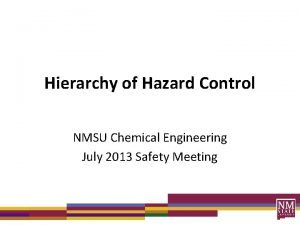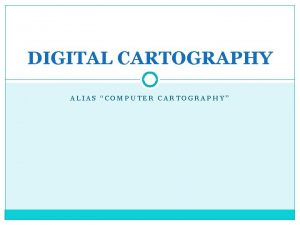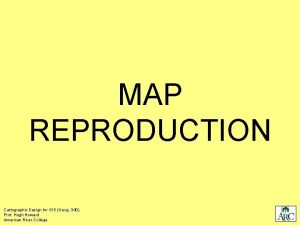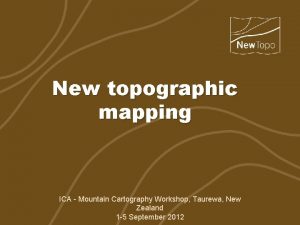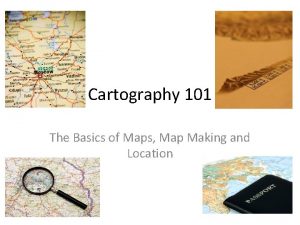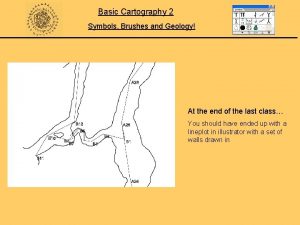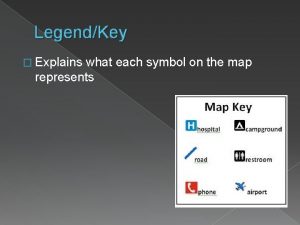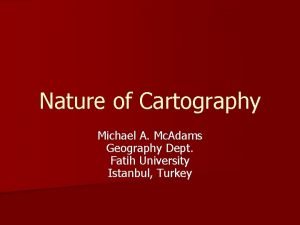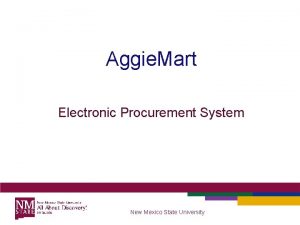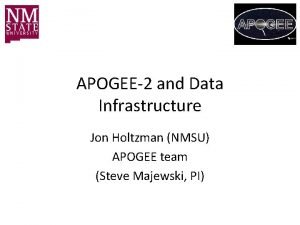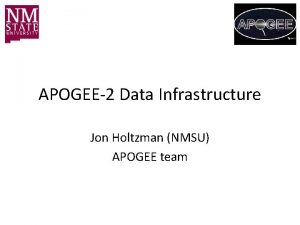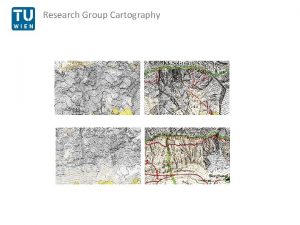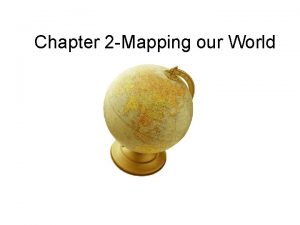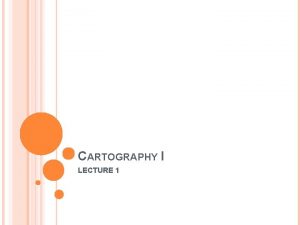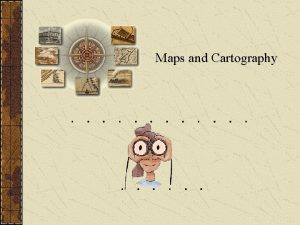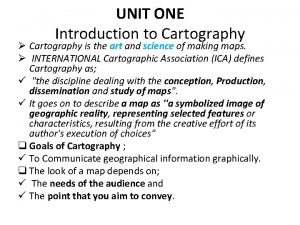Chemical Cartography with SDSSAPOGEE Jon Holtzman NMSU Michael








![Mean metallicity map < [M/H] > Number of stars Mean metallicity map < [M/H] > Number of stars](https://slidetodoc.com/presentation_image/2cc9adcfb59f17f707d7436c8ae7cee6/image-9.jpg)



![Using [α/Fe] as an age proxy High α/M stars Low α/M stars • Radial Using [α/Fe] as an age proxy High α/M stars Low α/M stars • Radial](https://slidetodoc.com/presentation_image/2cc9adcfb59f17f707d7436c8ae7cee6/image-13.jpg)

- Slides: 14

Chemical Cartography with SDSS/APOGEE Jon Holtzman (NMSU) Michael Hayden (NMSU), Jo Bovy (IAS), Steve Majewski (UVa), Jennifer Johnson (OSU), Gail Zasowski (JHU), Leo Girardi (Padova), Carlos Allende. Prieto (IAC), Ana Garcia-Perez (UVa), Szabolcz Meszaros (IU), David Nidever (UMich), Ricardo Schiavon (LJM), Matt Shetrone (UT) with the SDSS-III/APOGEE collaboration ( see Hayden et al, AJ, astro-ph 1311. 4569, also Anders et al, A&A, astro-ph 1311. 4549)

APOGEE at a Glance SDSS-III -- One of four experiments (BOSS/APOGEE until 2014) • Bright time 2011. Q 2 - 2014. Q 2 • 300 fiber, R ≥ 22, 500, cryogenic spectrograph, 7 deg 2 FOV • H-band: 1. 51 -1. 69 m AH /AV ~ 1/6 • S/N ≥ 100/pixel @ H=12. 2 for 3 -hr total integration • RV uncertainty spec. < 0. 5 km/s, 3 -hr; actual <~100 m/s, 1 -hr • 0. 1 dex precision abundances for ~15 chemical elements (including Fe, C, N, O, -elements, odd-Z elements, iron peak elements, possibly even neutron capture) • 105 2 MASS-selected giant stars across all Galactic populations. 2

APOGEE Science Goals • First large scale, systematic, uniform spectroscopic study of all major Galactic stellar populations/regions to understand: • chemical evolution at precision, multi-element level (including preferred, most common metals CNO) -- sensitivity to SFR, IMF • tightly constrain GCE and dynamical models (bulge, disk, halo) • access typically ignored, dust-obscured populations • Galactic dynamics/substructure with very precise velocities • order of magnitude leaps: ~2 -3 orders larger sample than previous high-R GCE surveys ~2 orders more high S/N, high R near-IR spectra ever taken 3 grey areas of map have A > 1

APOGEE Instrument • Built at the University of Virginia with private industry and other SDSS-III collaborators. John Wilson: Instrument Scientist; Fred Hearty: Project Manager; Mike Skrutskie: Instrument Group Leader • The APOGEE instrument employs a number of novel technologies to achieve 300 -fiber multiplexing / high resolution / infrared. • Integrated into fiber plugplate system of Sloan 2. 5 -m telescope (Spring 2011).

Field selection 24 hour 12 hour 3 hour (science) 3 hour (calibration) 1 hour ~343 fields ~600 star clusters ~116, 000 science stars Kepler fields

APOGEE data • First two years of data provide data for ~75000 giants – First year of data is public in SDSS DR 10 • Abundance pipeline (ASPCAP) currently providing stellar parameters, overall metallicity ([M/H]), and [α/M] ratios • Abundances have been validated/calibrated using cluster observations (Meszaros et al. 2013)

Abundances & Stellar Parameters ASPCAP fitting to M 3 giant spectrum 9

Distances • Obtain distances using APOGEE/ASPCAP parameters and isochrones – What distance is most probable given observed magnitude, metallicity, surface gravity and temperature, given the relation between these (ncluding relative numbers) as given by our understanding of stellar evolution? – Alternatively, what mass is most probable given observed parameters? Given this mass, what distance is implied by observed parameters? – Can also include priors on distances, e. g. from expected density distribution – See, e. g. , Burnett&Binney 2010, Binney et al 2014, Santiago et al 2014) • Need extinction estimate: provided star-by-star using near-IR + mid-IR color (RJCE method; Majewski et al. 2011)
![Mean metallicity map MH Number of stars Mean metallicity map < [M/H] > Number of stars](https://slidetodoc.com/presentation_image/2cc9adcfb59f17f707d7436c8ae7cee6/image-9.jpg)
Mean metallicity map < [M/H] > Number of stars

Mean metallicity map • Radial and vertical metallicity gradients are obvious • Radial gradient flattens in inner regions • In outer regions, gradient flatten above the plane • Vertical gradients flatten with increasing Galactocentric radius Results are generally consistent with previous results from numerous varied techniques, but have extended coverage, with more stars: in particular, inner disk

Metallicity spread • Number of stars allows determination of metallicity spread • At all locations, spread is larger than analysis uncertainties • Metallicity spread varies with location Additional information available in full shape of MDF!

Red giant sample • APOGEE targets are giants, which cover a wide range of ages – Typical ages of red clump stars ~2 Gyr – Typical ages of more luminous giants ~4 Gyr (but both depend on SF history)
![Using αFe as an age proxy High αM stars Low αM stars Radial Using [α/Fe] as an age proxy High α/M stars Low α/M stars • Radial](https://slidetodoc.com/presentation_image/2cc9adcfb59f17f707d7436c8ae7cee6/image-13.jpg)
Using [α/Fe] as an age proxy High α/M stars Low α/M stars • Radial gradient significantly flatter for high [α/M] stars • Radial gradient non-existent above plane for high [α/M] stars, but not for low [α/M] stars

Conclusions/Future work • APOGEE is providing homogeneous chemistry information across much of the Galactic disk • Many future directions: – MDFs – Individual element abundances – Kinematics / chemodynamics – Comparison with models, c. f. Minchev et al. 2013, Bird et al 2013 ( for more details on work on DR 10 sample, see Hayden et al, AJ, astro-ph 1311. 4569, also Anders et al, A&A, astro-ph 1311. 4549)
